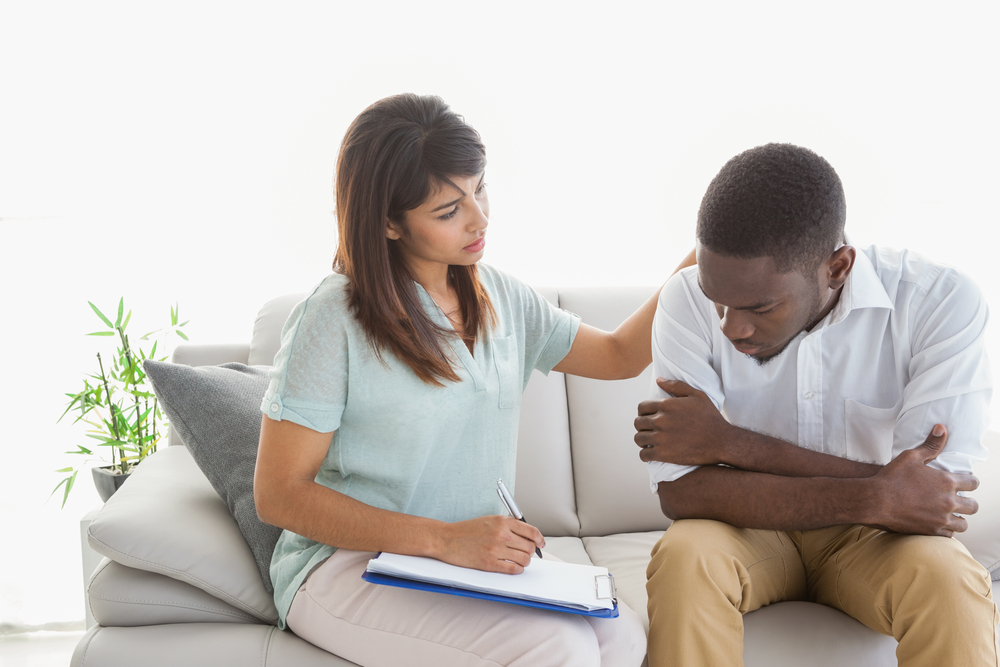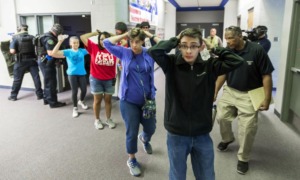
wavebreakmedia/Shutterstock
.
Nearly two-thirds of all gun deaths in this country are self-inflicted, according to an average from 2013 to 2017. In other words, of the almost 100 gun deaths a day, 66 are suicides. Let that sink in for a second.
When I share this statistic with people, I am often confronted with the retort, “Well, they’ll find some other way to kill themselves.” The evidence does not support this assertion. We know through research that all forms of gun violence are preventable.

Elizabeth Banach
Gun violence prevention is a second career for me. Over 20 years ago, after receiving my Master’s of Social Work, I enrolled in a four-year post-graduate psychoanalytic institute. My patient population for the training drew largely from students and young people who were unable to afford an established New York City therapist’s rates.
One of these young people, whom I will refer to as Sarah, came to me while she was a Ph.D. candidate at a highly competitive university in a largely male-dominated field. Sarah was a bright, engaging yet deeply depressed young woman. An African American, she was the first person in her family to attend college. Her astonishing academic success only served to further alienate her from her home and loved ones.
Sarah was referred to me after she attempted suicide and was committed to an inpatient psychiatric hospital for a month. Estranged from her family, she felt further ostracized within the confines of the hospital by the predominantly white patient population and staff.
Upon her release, my clinical supervisor urged me to establish with Sarah that she did not have plans to attempt suicide again and that she was not in possession of knives, drugs or guns she intended to use to end her life. I was guided in the process of establishing a written contract with Sarah to secure her cooperation in the process of keeping her alive.
Guns too effective in suicide attempts
As I look back on my work, I am struck by how little emphasis was placed on the lethality of a gun in my training. My supervisor’s guidance now strikes me as being fueled more by fear of the liability that my failure to address the gun issue could expose me (and my supervisor) to, than as a means to offset any self-harm on Sarah’s part.
The focus must remain on the patient and their survival. Sarah, like most of her peers, made an impulsive decision to end her life in a moment of despair. Seventy-one percent of people attempt suicide within one hour of making the decision, 48% attempt within 10 minutes. Many people who attempt suicide without a gun survive. There are 25 suicide attempts for every suicide death in the U.S.
However, when people attempt suicide with a gun, the likelihood that they will survive is greatly reduced. Guns are used in only 5% of suicide attempts but, because of their lethality, suicide attempts with guns represent over half the deaths by suicide. (In 2016, guns were used in 22,938 suicides and 4,357 life-threatening suicide attempts, totaling 5% of the nation’s 545,052 life-threatening suicide attempts that year [500,087 nonfatal attempts and 44,965 suicides]. In 2016, firearm suicides accounted for 22,938 (51.0%) of the 44,965 suicides in the United States.)
Fortunately, Sarah is among the survivors. The therapeutic intervention triggered by her overdose attempt got her the medication, therapeutic and community support she required. Today she is a successful professional with two young children.
Sarah’s story highlights three aspects of suicide prevention. The first is an integral part of the education of mental health practitioners: Suicide is preventable. The second and third aspects must be better incorporated into the education of health care providers and the general public: Suicide in the United States is largely a gun problem and is increasing becoming a problem for youth of color.
The Journal of Community Health reported that the suicide rate among African American females between the ages of 13-19 nearly doubled from 2001 to 2017. During the same time period for African American males ages 13-19, the rate of suicide rose 60%. We as a community cannot ignore the increasing rate of suicides among this population, and we must invest in better research to understand this disturbing trend.
Permit to purchase licensing
Advocates are just as responsible for being part of the solutions as health care workers. We play an essential role in preventing suicides by guns. As executive director of Marylanders to Prevent Gun Violence, I have had the privilege to work with Dr. Daniel Webster and his colleagues at the Johns Hopkins Center for Gun Policy and Research. Dr. Webster’s study of permit to purchase licensing laws provided the basis for our 2013 Firearm Safety Act.
Permit to purchase licensing requires the state to institute a waiting period for the purchase of a gun and check an applicant’s mental health records before licensing them to purchase a gun. For the individual to receive a permit to purchase license, he or she must pass a background check, be fingerprinted and attend a safety training course before to being able to legally buy a regulated firearm. Dr. Webster’s study of Connecticut demonstrated a 40% decrease in homicides and a 15% decrease in suicides when a permit to purchase law was passed.
Licensing and waiting periods are not the only policies that can help us protect people during their most vulnerable times. When I began my work in Maryland, I received, on average, one phone call every month. The situation was always slightly different but the script was almost universally the same: “My 21-year-old son is in legal possession of a gun, but I am terrified he is going to use it to kill himself.” I had to advise them that under Maryland law, there was little they could do. That changed when the Extreme Risk Protective Order (ERPO) was passed, legislation that allows certain individuals to seek a judge’s order to have guns removed from the home of a person who is believed to be a risk to himself or others.
Suicides can be prevented by better education and stronger policies. There are an estimated 16 million Americans alive today who have survived suicide attempts. They are parents, children, neighbors, co-workers. Each one of these lives is a vital part of a community and family. When people use guns to attempt suicide, the likelihood of them being successful is high.
Sarah survived because she attempted suicide with a drug overdose. She got the medication and therapy she needed and has proceeded to lead a successful and productive life. We as a society have a responsibility to ensure all people have the access to health care and the protection from guns to help prevent suicide.
Elizabeth Banach, LCSW, serves as the executive director of Marylanders to Prevent Gun Violence. She is proud to be at the helm of an organization that focuses its attention and resources on those individuals who are disproportionately affected by gun violence: people who use a gun to commit suicide and young men and women of color living in urban areas.































